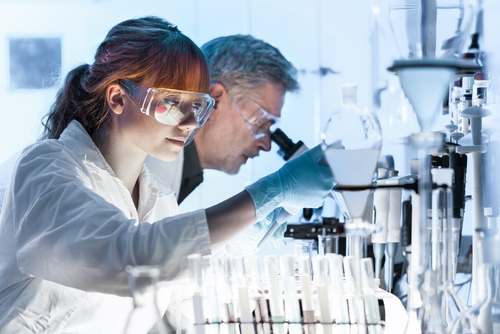Lewy Bodies Are Made of Much More than Alpha-Synuclein, Study Finds

Insoluble alpha-synuclein protein has long been thought to be the main component of Parkinson’s hallmark Lewy bodies, but researchers have now reported these abnormal aggregates are also made of cell membrane fragments, fat-like substances, and other cellular components.
This finding was reported in a study, “Lewy pathology in Parkinson’s disease consists of crowded organelles and lipid membranes,” that was published in the journal Nature Neuroscience.
Parkinson’s disease is a neurodegenerative disorder characterized by selective death of midbrain dopamine-producing neurons due to clustering of a protein called alpha-synuclein in structures commonly known as Lewy bodies.
For decades, scientists have believed that alpha-synuclein fibrils (meaning “small fibers”) were the main component of and at Lewy bodies’ core. However, investigators have now contested such belief after studying postmortem human brain tissue from patients with Parkinson’s disease.
Combining imaging techniques, the researchers were able to re-create the 3D structures of these disease-associated clusters. They found that besides alpha-synuclein, Lewy bodies also have membrane fragments, vesicular structures, and abnormal organelles (organ-like structures found inside cells) such as mitochondria — cells’ powerhouses.
Many, but not all, Lewy bodies with alpha-synuclein within them had protein fibers scattered between membrane fragments and organelles. Importantly, a non-fibrillar form of alpha-synuclein was also found to be intermingled with the other contents of the Lewy bodies.
“We used correlative light and electron microscopy and other advanced light microscopy methods to take a closer look at the brain of deceased Parkinson’s patients and discovered that the Lewy bodies consist mainly of membrane fragments from mitochondria and other organelles, but have in most cases no or only negligible quantities of protein fibrils,” Henning Stahlberg, PhD, professor and researcher at the University of Basel in Switzerland, and one of the study’s senior authors, said in a press release.
“The discovery that alpha-synuclein did not present in the form of fibrils was unexpected for us and the entire research field,” Stahlberg said.
The researchers also found that the bodies carried fat-like substances similar to those found in healthy brain cells, like myelin (nerve cells’ protective fatty layer) or fatty components of cell membranes.
“We present here a new theoretical model in which lipid membrane fragments and distorted organelles together with a non-fibrillar form of [alpha-synuclein] are the main structural building blocks for the formation of Lewy pathology,” the researchers stated.
Several studies have linked disturbances in intracellular movement of molecules and organelles with Parkinson’s disease. In addition, alpha-synuclein has been shown to be capable of disrupting the integrity of mitochondrial membranes, manipulating and reorganizing membrane components, and leading membranes to form vesicles under specific biochemical conditions.
Collectively, the study’s findings support the hypothesis of abnormal movement of organelles as a potential driver of Parkinson’s disease mechanism. Also, they “emphasize the need to consider population heterogeneity of Lewy pathology” and show that lipids (cells’ fatty molecules) could play an important role, the researchers said.
“The questions why it has taken so long to better characterize Lewy bodies can perhaps be answered with the previous sample preparation and electron microscopy methods. Today’s technologies enable us to have a much more detailed look into the morphology of [the] human brain,” Stahlberg said. “The big question for us now is: How does alpha-synuclein contribute to the formation of Lewy bodies, if not present in [the] form of fibrils?”






